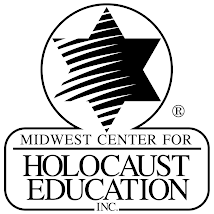Here is my situation. I am very passionate about Holocaust education and believe that all students need to study it in order to understand the complexity of human behavior and its consequences in history and today. But here is the catch. I teach U.S. History. And no where in our state standards for U.S. History does it mention teaching the Holocaust.
Understandably, the focus is on the US and its role in World War II, but this leaves a teacher like me in a bit of a pinch. I really feel the Holocaust is an important subject for students to engage in but technically I shouldn’t cover it in any detail because it will not be tested on our end of course exam. So what is a teacher to do? The last thing I want to do is a quick one-hour overview of the Holocaust because, to me, the significance of Holocaust education is helping students understand the complexity of it and in simplifying it and turning it into a neatly packaged presentation my students don’t engage in the material they just “learn it” for a unit test.
So for the last few years I’ve been trying hard to find ways to integrate Holocaust education into a class that does not have it as a standard, and to integrate it in ways that make students engage in the material but at the same time do not become so time-consuming that I get too far behind the “instructional alignment guide" (basically that is our calendar for what we should be teaching and when.) Well the best solution I’ve found are some great lesson plans/resources that connect American history with 20th century German history and Holocaust education.
The first resource that I’ve found that is very useful in connecting things happening in America with those in Germany is
Race and Membership in US History: The Eugenics Movement. It is a book published by Facing History and Ourselves and it deals with the US eugenics movement and its connection to Germany. The book has excellent readings that will engage students in the bigger issue of what constitutes “progress.” This book actually ties in nicely as well with the
Deadly Medicine exhibit created by the
United States Holocaust Memorial Museum. I had the luxury of taking my students last year to the actual exhibit because it traveled through our city, but there is an
on-line version that has great resources! It also examines both the U.S. eugenics movement and its importance in 20
th century Germany as well.
Anther resource can both be found on the
MCHE website. It is a lesson plan that compares and contrasts
Jim Crow laws with early Nazi laws including the
Nuremberg Laws. My students find this lesson especially engaging as it is really looking at the bigger issue of law. For example, as a class we will discuss the purposes of law and then examine these laws in context of those purposes.
The other lesson I use was created by USHMM. It examines the plight of Jewish refugees attempting to flee Germany and enter the United States on the
St. Louis. This lesson is great because it helps address one of those frequently asked questions by students which is, “Why didn’t the Jews just leave?” This lesson is also great because it addresses the United States and its response to immigration during the Great Depression.
So there you have it---if you are like me and stuck in a bit of a bind in terms of how to teach the Holocaust in a class where it is not emphasized as a state standard---try these lessons and let me know how they work!
 During the summer of 2006, I traveled to Warsaw, Poland. I was there to study the Holocaust with the Holocaust and Jewish Resistance Teacher's Program. On our first day there, when I was trying to overcome jetlag, we hit the ground running visiting many Holocaust related sites. In a stupor, I was going through the motions; not really taking it all in. I was standing in from of the Umschlagplatz [the deportation area in the Warsaw Ghetto] and found myself staring down the main street in a daze.
During the summer of 2006, I traveled to Warsaw, Poland. I was there to study the Holocaust with the Holocaust and Jewish Resistance Teacher's Program. On our first day there, when I was trying to overcome jetlag, we hit the ground running visiting many Holocaust related sites. In a stupor, I was going through the motions; not really taking it all in. I was standing in from of the Umschlagplatz [the deportation area in the Warsaw Ghetto] and found myself staring down the main street in a daze. 


